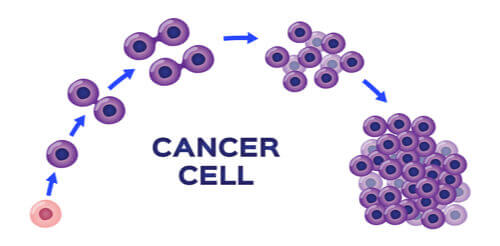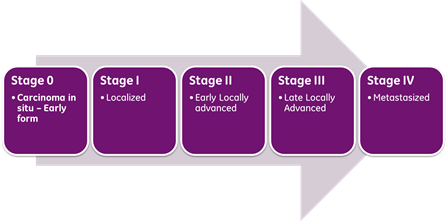
What is cancer?
Cancer is the term used for a large number of diseases with one common trait: the development of abnormal cells that affect pre-existing cells and spread throughout the body.
Simply put, the human body keeps producing new cells, and sometimes the production is so fast that these new cells grow in areas where the old cells haven’t died yet, and this is what cancer is.
How does cancer work?
Cancer cells act differently from normal cells. The Canadian Cancer society has identified the following traits of cancer cells:
-
● They divide out of control and pay no heed to signals that urge them to stop dividing
-
● They fail to grow into cells with clearly defined roles
-
● They manage to sneak past the immune system
-
● They are unable to stick together and may travel to different parts of the body through blood
-
● They cause damage to organs and cells by growing into them
So, basically, the cancer cells grow out of control, and unlike other cells, they do not have certain tasks they have to do. When our bodies try to reign them in, they ignore signals that tell them to stop. They can also spread throughout the body through the blood or lymphatic system, and that is how they grow in different places, damaging organs and tissues.
Cancer staging
One common characteristic different types of cancer (most of them) have is the ability to spread to different parts of the body. The cancer staging system is a system to help doctors classify the severity of a cancer based on where the cancer originated in the body and how far it has spread. Based on this, the cancer is assigned a stage ranging from I to IV. Having knowledge of where the cancer started and what stage it is at helps doctors make predictions and plan the treatments accordingly.
What are the different stages of cancer?
A commonly used method for ascertaining the stages of cancer is the TNM method which was developed by the American Joint Committee on Cancer (AJCC). Based on results from tests, biopsies of tumours and scans, doctors answer a few questions, namely:
-
● How large the first tumour (primary tumour) is and what is its location? (Tumour, T)
-
● If the tumour has begun to spread to lymph nodes, and if it has, which ones and how many? (Node, N)
-
● Has the cancer begun spreading to other parts of the body? If it has, how severely and where has it spread? (Metastasis, M)
-
● Are there any particular markers linked to the cancer which may render it less or more likely to spread to other parts of the body?

Based on results of the TNM method, results are collated, analyzed, and the stage of the cancer is ascertained. While some cancers have a zero stage (0), most cancers range from stages one (I) to four (IV), denoted by Roman numerals.
-
● Stage 0: At stage zero or the nascent stage, cancer cells are concentrated in the area of origin, meaning they haven’t spread past where the cancer originated and the tissues nearby are unaffected. Any cancer in this stage is generally curable, given the ease of removing a tumour via surgery.
-
● Stage I: At this stage, the cancer is usually a small cancer or tumour that, having grown into nearby tissues, hasn’t grown too deep into them. Also dubbed early stage cancer, stage I cancer is also characterized by it not having spread to other parts of the body or the lymph nodes.
-
● Stage II and III: Tumours in stages II and III have grown larger, also deeply growing into neighboring tissue. At these stages, while the cancer might not have spread to other parts of the body, they may have made their way to the lymph nodes.
-
● Stage IV: Also called advanced cancer and metastatic cancer. The word metastatic indicates growth of cancer away from the site of origin or primary site. So, stage IV cancer usually sees the cancer having spread to organs and parts across the body.
What is the prognosis for the different stages of cancer?
Simply put, the longer you wait, the lesser the chances of cure get. This is especially startling considering the fact that a whopping 70% of patients are only diagnosed at a terminal stage. So, in a way, early detection is a key.
|
Cancer Stages |
Chances of Cure at Diagnosis |
|
Stage 1 |
85% |
|
Stage 2 |
60% |
|
Stage 3 |
30% |
|
Stage 4 |
Life expectancy of ~5 years |
How to protect yourself against cancer?
While preparing for cancer emotionally can be tough, one must keep in mind that not only does cancer exert a physical and mental toll on individuals – it also deeply affects them financially. In addition to doing whatever one can to prevent cancer, another widely made recommendation is investing in cancer insurance, which helps one deal with the financial implications of being affected by cancer.


Comments